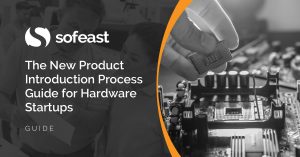 This is the 4th in the series of 19 articles helping you through the New Product Development process.
This is the 4th in the series of 19 articles helping you through the New Product Development process.
We will be moving on to the third phase now:
Phase Objectives
Concept testing is carried out after the idea screening. The objective of this phase is to determine the following:
- Gain an understanding of what potential buyers and customers think of the product concept
- Determine if the market is ‘ready’ for the new product (i.e. can the product sell?)
- Understand what changes are required from the initial feedback given by those customers that have reviewed the concepts
Concept testing is included within the process so that any organization can predict the success of a new product idea before that idea progresses through too many more stages which inevitably will begin to increase the required financial investment.
Another major part of this phase is to ensure you have completed all the relevant patent searches, carried out all the design due diligence, and covered all the other legalities involved with new product development.
Methods for getting feedback from customers
There are a number of different methods used to present product concepts to customers in order to obtain feedback; we cover just a few below.
Focus Groups
The Market Research Association defines a focus group as ‘the meeting of a small group of individuals who are guided through a discussion by a trained moderator (or consultant). The goal of the focus group is to get beyond superficial answers and uncover insights on consumer attitudes and behavior’.
From your business point of view, the focus group could be made up of a number of long-standing and trustworthy customers, some staff at different levels within your organization, other like-minded business professionals, and potential investors.
All focus groups should have a moderator to manage and guide the group through the process of reviewing the concepts and Q&A sessions.
At the end of the focus group session you should have a better understanding of what the general feedback is, and on what areas you need to work before moving forward with development.
Survey and Questionnaires
You need to approach a significant sample of people who match the profile of your target audience when conducting surveys and sending out questionnaires. Unless people care about the product or service, you’ll find that response rates are generally low.
Market research questionnaires are a well-known way of generating market information. Questionnaires are typically used to produce numbers. For example, how many potential customers are there in the local area, whether they would find such a product or service useful, and the sort of price they would be willing to pay for it. The key is to ask the right people the right questions, and to ask enough people to get meaningful results. (Source: marketingdonut).
Feedback and what to do with it
From all the marketing research and concept idea testing, you should be able to determine the following attributes:
- What product features must be incorporated into the design
- What the benefits of each feature are
- How the customer will react to the product when it reaches the market
- Pricing points (this may differ depending upon feature list)
- Areas of the design that need to be changed, modified or eliminated
With a more solid product specification, you should be able to move forward into the next development phase with confidence.
Interested in this topic? You may also like Sofeast’s New Product Launch Roadmap[XLS + Video]
Our ‘new product launch roadmap’ unveils the steps that your supplier will never tell you are needed, and yet all veteran buyers consider as indispensable. Hit the button to get your copy:
Patents and Due Diligence
If you are asking yourself “do I need to worry about patents?”, the short answer is YES. It is important that you do not infringe any intellectual property rights (IP) that belongs to somebody else. The simplest way to find this out is to carry out patent searches to check whether your design or product is OK. This also allows you to consider the information before thinking of filling for your own patent and owning your own IP.
A quick method of searching for patents is www.google.com/patents.
If you are thinking of applying for your own patent, E. Blum & Co suggests the following:
1. What can be patented?
For an idea to be patentable, it has to fulfil various criteria, in particular:
- An invention has to be new. In order to be new, it has to differ from everything known to the public. Note: It is often the inventor herself/himself who destroys the novelty of his idea by disclosing his ideas to a third party without secrecy agreement.
- An invention must not be obvious in regard to the state of the art. “Obviousness” has to be judged from the point of view of an expert skilled in the relevant technical field. It must be determined what problem the putative invention solves in comparison to known solutions in the field. If the state of the art encourages or leads the expert to choose a certain solution to this problem, this solution is considered to be obvious — if not, the solution is considered to be inventive.
- An invention must have technical character. A method for doing business is, in many countries, not patentable. However, as soon as for example a technical problem is solved or technical considerations are required, it may be patented.
Naturally, we must state that we are not providing any legal advice here. We suggest you discuss these matters with your lawyer.
2. Due Diligence
From a new product development point of view, carrying out due diligence is all about making sure all the legal aspects have been covered so that when your product gets to market there are no nasty surprises. Make sure everything is documented and recorded for future reference.
End of Phase 3
At the end of each phase, there should be a review meeting that goes over all the key elements and information from that phase. We already touched on this in the last article (part 3).
There is a procedure to follow for each of the phase reviews that result in a decision for the project (does it STOP, GO, or REVISIT) before proceeding onto the next phase. This review meeting is commonly referred to as a Stage Gate Review with the stop/go being the gate for the next phase.
Go to part 5: Developing the Product
Want to learn more about the new product introduction process for hardware startups?
Sofeast’s guide covers everything hardware startups need to know for making a new product in China and successfully bringing it to market.
Hit the button below to read the guide:



